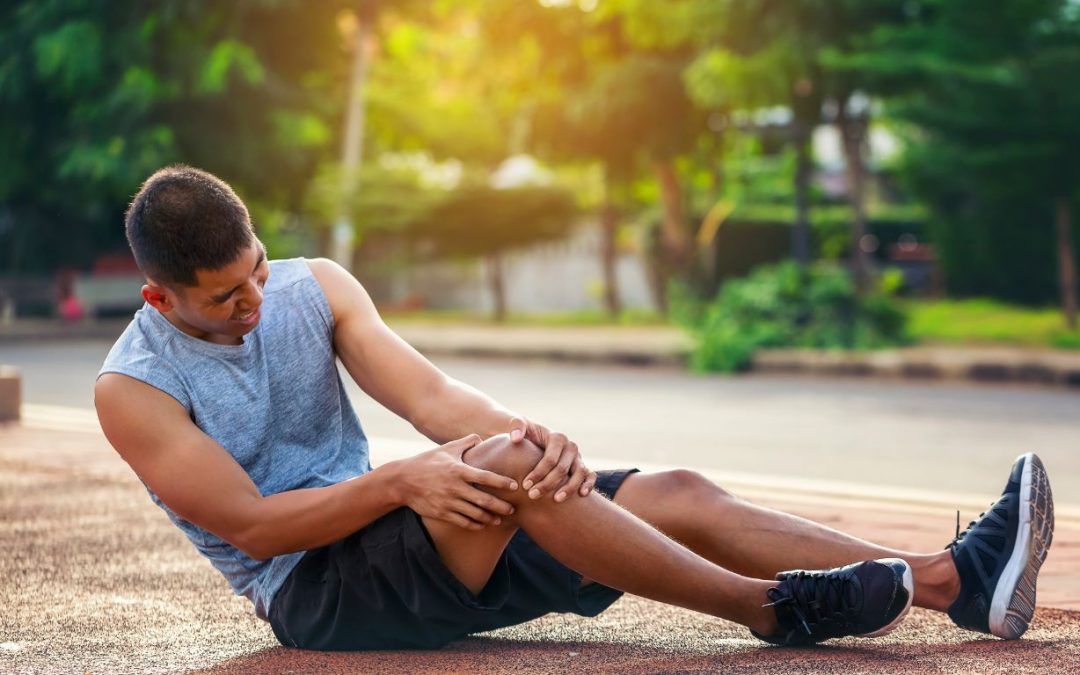Top 10 Causes of Knee Pain and the Best Treatments
Knee pain is one of the most common joint problems. It can affect athletes, active adults, and even people who sit most of the day. Because the knee is a large and complex joint, pain can come from many different sources.
Here are the 10 most common causes of knee pain and the treatments that research shows are most effective.
1. Osteoarthritis (OA)
This is the “wear and tear” type of arthritis. It happens when cartilage in the knee breaks down, leading to stiffness, swelling, and pain.
- Treatments: Exercise, weight management, bracing, and manual therapy. (PubMed)
2. Patellofemoral Pain Syndrome (Runner’s Knee)
Pain around the kneecap, often made worse by running, climbing stairs, or sitting too long. It’s usually caused by muscle imbalance or poor alignment.
- Treatments: Strengthening quads and glutes, improving movement patterns, physiotherapy.
3. Meniscus Tears
The meniscus is cartilage that cushions the knee. Tears can happen suddenly with twisting movements or slowly with wear and tear.
- Treatments: Rest, physiotherapy, bracing, or surgery if severe.
4. Ligament Injuries (ACL, MCL, PCL, LCL)
Ligaments connect bone to bone. Sports that involve pivoting, cutting, or sudden stops can injure them.
- Treatments: Rest, bracing, physiotherapy, surgery for complete tears.
5. Tendinitis / Tendinopathy
Inflammation or degeneration of tendons around the knee, such as “jumper’s knee.”
- Treatments: Rest, eccentric strengthening, physiotherapy, manual therapy.
6. Bursitis
Small fluid-filled sacs called bursae cushion the knee. When irritated, they can swell and cause pain.
- Treatments: Rest, ice, activity modification, physiotherapy, sometimes anti-inflammatory medication.
7. Iliotibial Band Syndrome (ITBS)
Pain on the outside of the knee, common in runners and cyclists. Caused by tightness and friction of the IT band.
- Treatments: Stretching, soft tissue work, strengthening hip and glute muscles.
8. Osgood-Schlatter Disease
A condition in growing kids and teens. Pain and swelling develop just below the kneecap from repetitive stress.
- Treatments: Rest, activity modification, stretching, physiotherapy.
9. Cartilage Damage
Damage or loss of cartilage can happen from injury or degeneration. It leads to pain, swelling, and stiffness.
- Treatments: Physiotherapy, bracing, injections (PRP, hyaluronic acid), surgery in severe cases. (Verywell Health)
10. Inflammatory Conditions
Knee pain can also come from conditions like rheumatoid arthritis, gout, lupus, or infections.
- Treatments: Medical management, physiotherapy for mobility, and manual therapy to ease stiffness.
Best Treatments for Knee Pain
Research shows some treatments work well across many causes of knee pain:
✅ Exercise & Physiotherapy – Strengthens muscles, improves flexibility, and corrects movement.
✅ Weight Management – Reduces stress on joints.
✅ Bracing & Supports – Helps with alignment and reduces strain.
✅ Manual Therapy & Massage – Loosens tight muscles and improves circulation.
✅ Gait Training & Footwear Changes – Corrects poor movement patterns.
✅ Injections (Steroid, PRP, Hyaluronic Acid) – Can provide short-term relief.
✅ Surgery – Only used if conservative care fails or with major damage.
Studies show that exercise, bracing, and weight management consistently reduce pain and improve function in knee osteoarthritis and other knee conditions (AAFP).
When to Seek Help
- Pain lasting more than a few weeks
- Swelling that doesn’t go down
- Locking, catching, or giving way of the knee
- Pain after an injury that doesn’t improve
Early treatment makes recovery easier and helps prevent long-term issues.
Final Thoughts
Knee pain has many possible causes, but effective treatments exist for most of them. The first step is getting the right diagnosis. From there, physiotherapy, chiropractic care, massage therapy, and lifestyle changes can make a big difference.
If you’re struggling with knee pain, don’t wait—getting help early means you can return to your favorite activities faster and with less pain.

